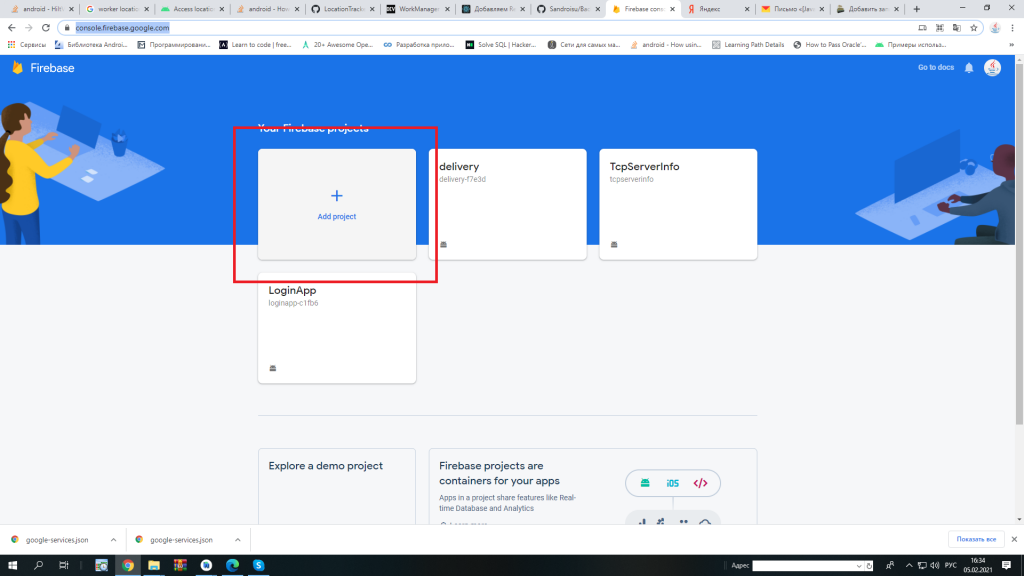В базе данных доступны следующие строки:

Требуется в колонке c_house_number, которая является типом text, найти число и сохранить преобразованное значение в новой колонке:
Читать далее «PostgreSQL: преобразование строки в число»Примеры использования кода
В базе данных доступны следующие строки:

Требуется в колонке c_house_number, которая является типом text, найти число и сохранить преобразованное значение в новой колонке:
Читать далее «PostgreSQL: преобразование строки в число»#!/bin/bash psql -c "SELECT pg_terminate_backend(pid) FROM pg_stat_activity WHERE pid <> pg_backend_pid() AND datname = 'vote-dev';" psql -c 'ALTER DATABASE "vote-dev" RENAME TO "vote-dev-db";'
Для начала необходимо пройти процедуру регистрации в https://console.firebase.google.com, а затем зайти в консоль.


Для генерации APK с релизной подписью необходимо выбрать пункт меню Build -> Generate Signed Bundle / Apk (рисунок 1).
Читать далее «Генерация подписи для андроид приложения через интерфейс Android Studio»select proname, prosrcfrom pg_procwhere prosrc like '%search text%';
-- список ТУ заданной РЭС
create temp table t_registr_pts (
id uuid,
c_registr_pts text,
f_status_consume int,
b_technical_metering bool,
f_subscr uuid,
f_address uuid,
c_ps text,
c_line_ps text,
c_rp text,
c_line_rp text,
c_tp text,
c_line_tp text,
c_raion text,
c_city_name text,
c_settlement_name text,
c_street_name text
) on commit drop;I found a good answer here: Tracking progress of an update statement
The trick is to first create a sequence (name it as you like):
CREATE SEQUENCE query_progress START 1;
Then append to your query’s WHERE part:
AND NEXTVAL('query_progress')!=0
Now you can query the progress:
SELECT NEXTVAL('query_progress');
Finally don’t forget to get rid of the sequence:
DROP SEQUENCE query_progress;
Note that this will most likely make your query run even slower and every time you check progress it will additionally increment the value. The above link suggested creating a temporary sequence but PostgreSQL doesn’t seem to make them visible across sessions.
do
$$
declare
_f_user int = 63; -- это идентификатор пользователя из таблицы core.pd_users: 63 - Милютин, 59 - Телегин
_d_date timestamptz = now();
_n_longitude numeric(19, 6) = 47.2279506;
_n_latitude numeric(19, 6) = 56.1484872;
_c_network_status text = 'online';
begin
insert into core.ad_tracking (fn_user, d_date, n_longitude, n_latitude, c_network_status)
values(_f_user, _d_date, _n_longitude, _n_latitude, _c_network_status);
end;
$$
language plpgsql;
SELECT nspname || '.' || relname AS "relation", pg_size_pretty(pg_total_relation_size(C.oid)) AS "total_size"
FROM pg_class C
LEFT JOIN pg_namespace N ON (N.oid = C.relnamespace)
WHERE nspname NOT IN ('pg_catalog', 'information_schema') AND C.relkind <> 'i' AND nspname !~ '^pg_toast'
ORDER BY pg_total_relation_size(C.oid) DESC
LIMIT 100;
Необходимо найти долговыполняющиеся запросы к базе данных.
Необходимо включить вывод в лог запросов, длительность которых больше заданной длительности.
Читать далее «Поиск медленных запросов»